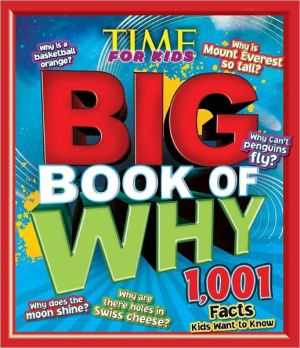Don't Know Much About the Solar System
Nine planets\ — More than seventy moons —\ And hundreds of stellar facts about the\ Solar System!\ True or False:\ 1. Venus is the coolest planet in our solar system.\ 2. Halley's comet returns every seventy-six years.\ 3. The universe is 15 to 20 billion years old.\ Blast Off and discover the secrets of outer space! Have you ever wondered why our galaxy is called "the Milky Way," or if you could really catch a shooting star? Here's your chance to find out without ever leaving Earth....
Search in google:
Nine planets — More than seventy moons — And hundreds of stellar facts about the Solar System!True or False: 1. Venus is the coolest planet in our solar system. 2. Halley's comet returns every seventy-six years. 3. The universe is 15 to 20 billion years old.Blast Off and discover the secrets of outer space! Have you ever wondered why our galaxy is called "the Milky Way," or if you could really catch a shooting star? Here's your chance to find out without ever leaving Earth. Best-selling author Kenneth C. Davis packs fascinating facts and riddles into his signature question-and-answer format. He makes exploring the solar system an out-of-this-world experience!Children's LiteratureThis entry in the "Don't Know Much about" series delivers the goods in zippy, hip, question-and-answer format. Each double-page includes four or five questions with paragraph answers; boxed extra, silly or fascinating facts; trivia contests; jokes; occasional bulleted material; and other varieties of design elements to catch the eye. Report writers can look in back for more numbers with which to compare planets, but there are more than enough facts and sidelights in the text that will interest children and invite plenty of "Dad! Mom! Did you know..."s at the dinner table. No index but the bold headings on each page lead children to information about each planet, the moon, the solar system and planet movement, the science of astronomy, and our place in the universe. Martin's black line and full-color cartoon illustrations contribute humor and visual interest. A cool presentation about a topic of great interest to middle elementary school students, this book could serve as a classroom catalyst and resource plus it's a good family kind of book. 2001, HarperCollins, $15.95 and $15.89. Ages 6 to 10. Reviewer: Susan Hepler
\ Children's LiteratureThis entry in the "Don't Know Much about" series delivers the goods in zippy, hip, question-and-answer format. Each double-page includes four or five questions with paragraph answers; boxed extra, silly or fascinating facts; trivia contests; jokes; occasional bulleted material; and other varieties of design elements to catch the eye. Report writers can look in back for more numbers with which to compare planets, but there are more than enough facts and sidelights in the text that will interest children and invite plenty of "Dad! Mom! Did you know..."s at the dinner table. No index but the bold headings on each page lead children to information about each planet, the moon, the solar system and planet movement, the science of astronomy, and our place in the universe. Martin's black line and full-color cartoon illustrations contribute humor and visual interest. A cool presentation about a topic of great interest to middle elementary school students, this book could serve as a classroom catalyst and resource plus it's a good family kind of book. 2001, HarperCollins, $15.95 and $15.89. Ages 6 to 10. Reviewer: Susan Hepler\ \ \ \ \ School Library JournalGr 3-5-The author of the popular "Don't Know Much about" series for adults and Don't Know Much about Space (HarperCollins, 2001) for middle readers goes after a somewhat younger audience here. Many of the facts are recycled, but the writing and art are all new, and the title doesn't reflect the book's scope. Davis covers the solar system's components, stars, constellations, galaxies, and space travel, too. Not in much depth, of course: with one to three questions per page and a several-sentence answer for each one, the intent here is plainly to spark interest in a topic, rather than lay out a systematic picture. The tone is anything but earnest; Davis sprinkles his tour with lame jokes ("What planets are the saddest? Answer: Uranus and Neptune-they're always blue!"), and Hallmark-artist Martin chimes in with plenty of lighthearted cartoon illustrations featuring wisecracking celestial bodies with faces and young explorers in space suits. Except that Galileo is wrongly credited with "proving" Copernicus's heliocentric theory, the information is accurate, as far as it goes, and budding astronomers ready to expand their view of the high frontier even further will find a generous selection of Web-site addresses at the end. Though this tour is but one in a crowd, its combination of visual appeal and lively exposition should attract and hold even less able or interested readers.-John Peters, New York Public Library Copyright 2001 Cahners Business Information.\ \








